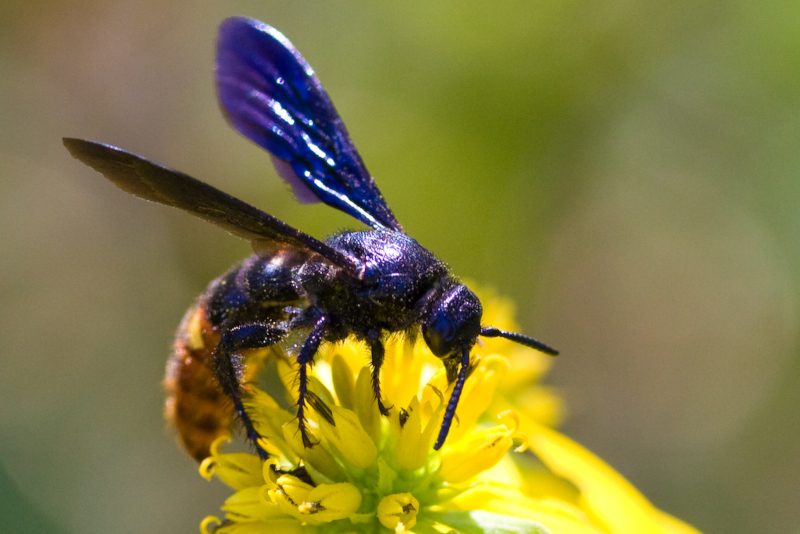
Blue-Winged Wasp Facts
- The most frequently used common name for this remarkable invertebrate is the descriptive one of Blue-Winged Wasp. The insect does have at least one other generally accepted title, though. That’s the similar term of two-spotted scoliid wasp.
- Inside of scientific circles, however, it’s probably more often refered to by its technical designation. Thankfully, that’s an extremely easy term for the layperson to pronounce, compared to most. The Arthropod bears the official moniker of Scolia dubia.
- The beautiful creature received that epither due to the work of Thomas Say. The respected American entomologist accomplished the first official recognition of it as a separate and distinct species. That scientifically noteworthy deed occurred in 1837.
- Fortunately, the Blue-Winged Wasp appears to be maintaining a population base that’s both stable and sufficient. That pleasant condition further seems to hold true throughout the entirety of its native range. The IUCN thus currently has no listing for it.
- The intriguing species nevertheless faces the same potential threats to its continued existence as all species. Most of these dangers stem from the actions of mankind. They include the perils of habitat loss and the effects of ongoing climate change.
Related Articles
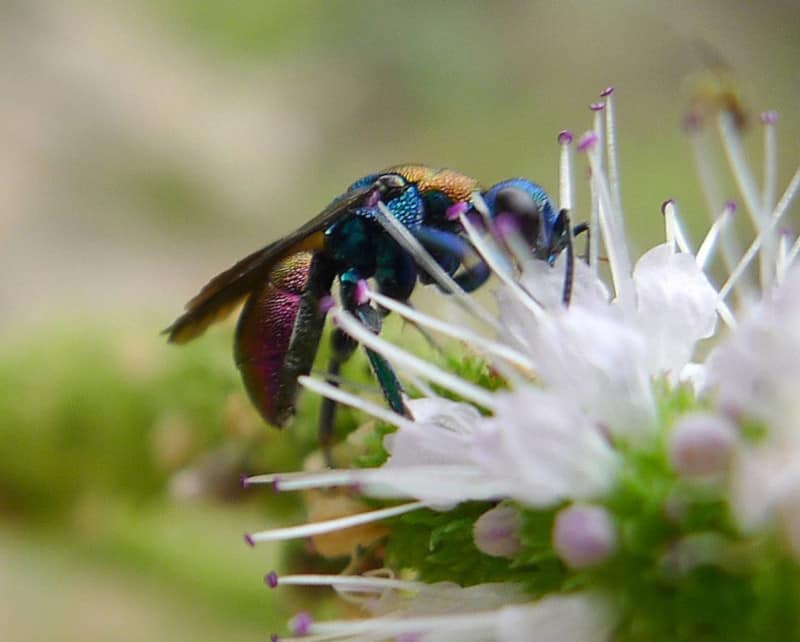
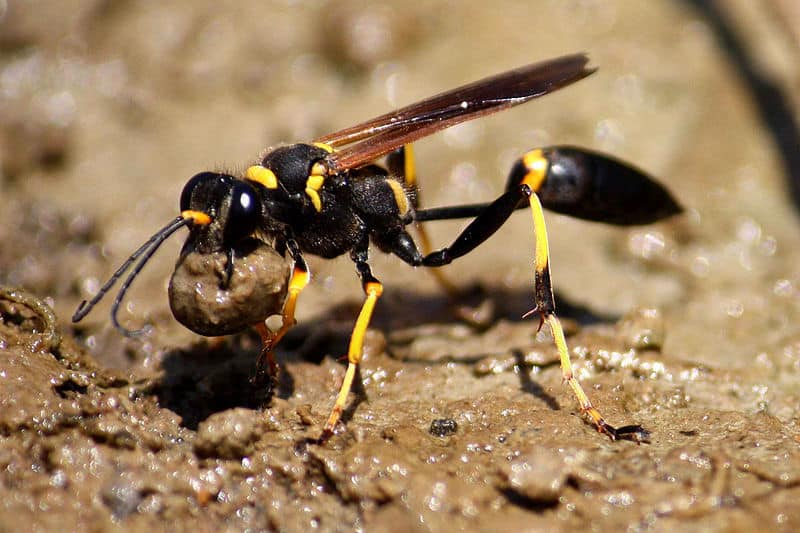

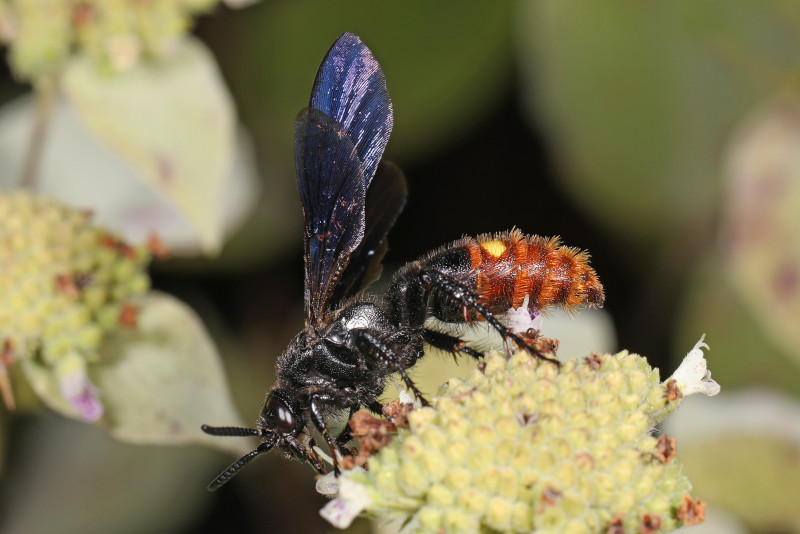
Blue-Winged Wasp Physical Description
The mesmerizing Blue-Winged Wasp quickly captures the attention of those fortunate enough to notice one of these wonders. It typically does so due to more to its appearance than size, however. That’s due to the fact that, in size, it ranks as an average-sized wasp.
Much like many of the countless invertebrates around the world, it also displays a certain degree of the physiological characteristic of sexual dimorphsim. In this insect’s case, though, this trait manifests itself in differences in the physical form of the body itself.
That’s partly because the posterior section of the body of the male possesses a total of seven segments. The female, however, only has six of these. Males of the species additionally typically display somewhat longer antennae than their female counterparts.
Yet the genders present the same outward appearance otherwise. This includes overall length. Among mature individuals of both sexes, this ranges from an average of approximately 0.8 – 1.0 in (2.0 – 2.5 cm). Exceptional examples rarely exceed this by much.
In terms of coloring, the Blue-Winged Wasp presents an eye-catching combination of colors. The head and thorax show dark black. This also extends through either the second or third segment of the abdomen. From there, though, the rest usually presents a bright red.
It’s the wings of the creature that nevertheless garner the most attention. They also serve as the source of its common name. These appendages develop as long and thin. But it’s their color that most draws the eye, given that they display a vibrant shade of violet-blue.
- Kingdom: Animalia
- Phylum: Arthropoda
- Class: Insecta
- Order: Hymenoptera
- Family: Scoliidae
- Genus: Scolia
- Species: S. dubia

Blue-Winged Wasp Distribution, Habitat, and Ecology
The attention-grabbing Blue-Winged Wasp evolved as native to a moderately large expanse of the globe. That consists of a general region already well known for its abundance of natural wonders. That’s because it developed as endemic to a portion of North America.
Within that greater range, however, the invertebrate lives almost entirely inside the borders of the United States. There, though, it resides in all but the most western part of the country. Yet, the most southern part of its territory reaches as far as Coahuila, Mexico.
This remarkable creature also evolved as quite versatile in its habitat requirements. Due to that flexibility, it makes its home within a wide variety of ecosystems. Essentially, any locale inside its overall range possessed of a temperate climate suffices, in that respect.
This Arthropod does have one other need concerning where it makes its home, however. Understandably, that’s the presence of an abundant food source for the young. To that end, it’s most commonly found in such settings as meadows, fields, and even lawns.
The Blue-Winged Wasp lives a diurnal behavioral pattern. It’s also typically only active above ground during the summer months. During that time, the social species generally groups together. Males usually fly close to the ground, in groups of about a dozen.
Following mating, the female digs into the soil, to locate a grub. Once she finds it, she stings it, and lays an egg on its body. Once that hatches, it uses the grub as its food source. Mature adults, though, consume the nectar of various locally available types of flowers.
Species Sharing Its Range
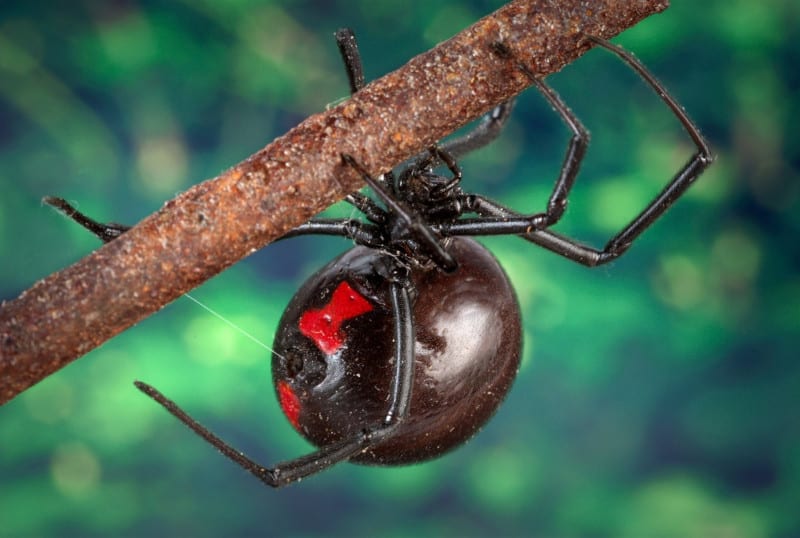

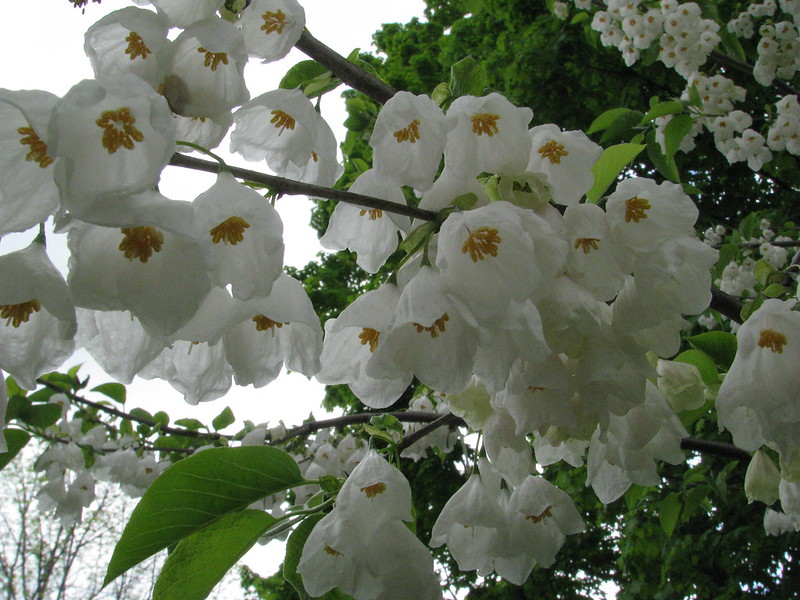
Check out our other articles on 5 Herbaceous Plants of Georgia, Marbled Polecat, Great Barrier Reef, Appalachian Avens, Great Barracuda, Nicobar Pigeon, Atlas Beetle, Mangove Monitor









Leave a Reply